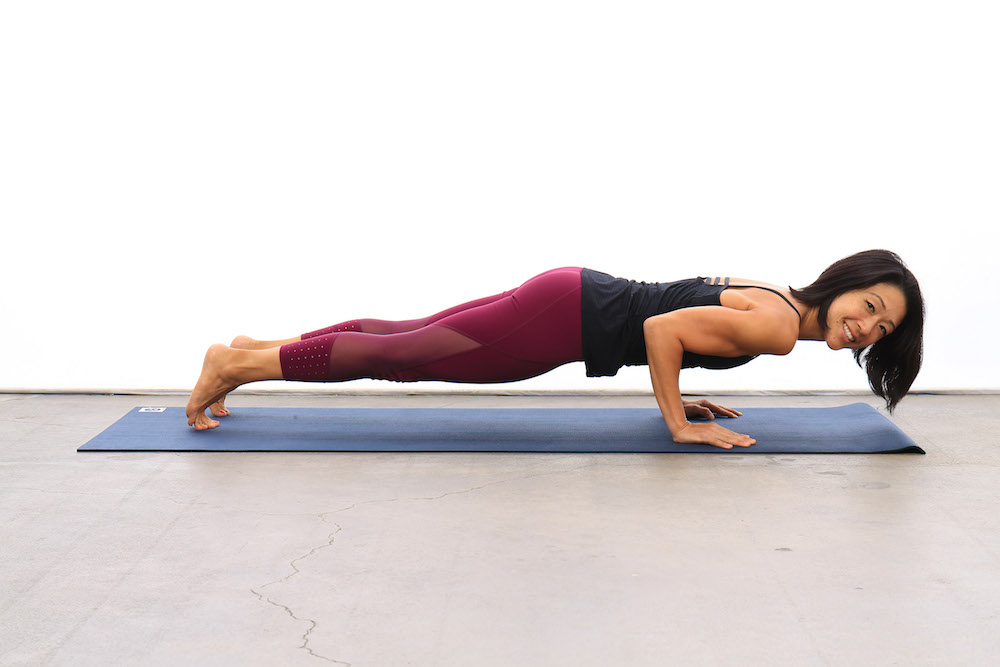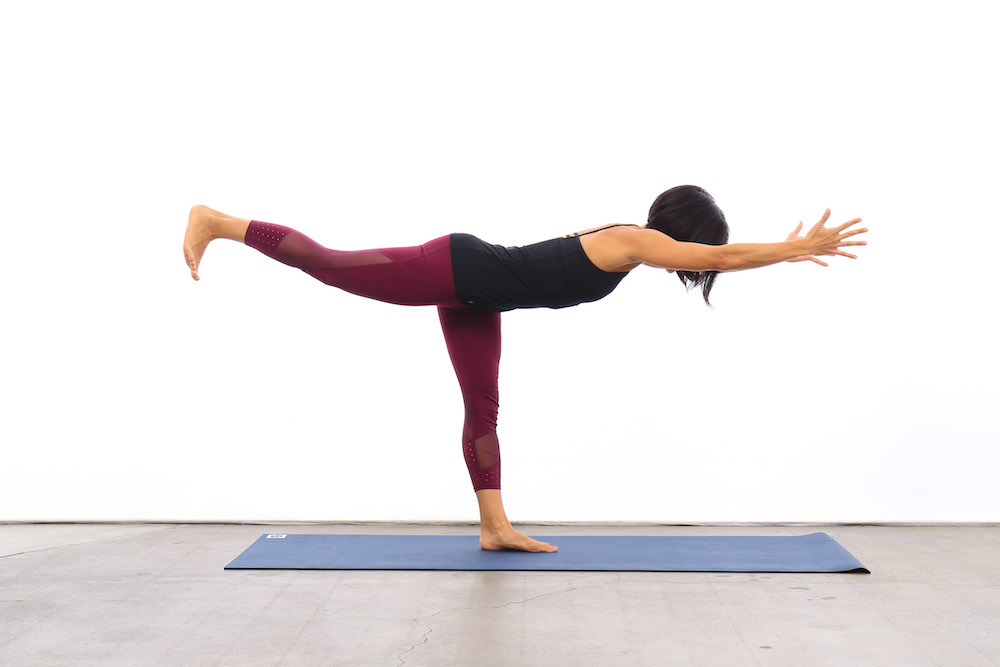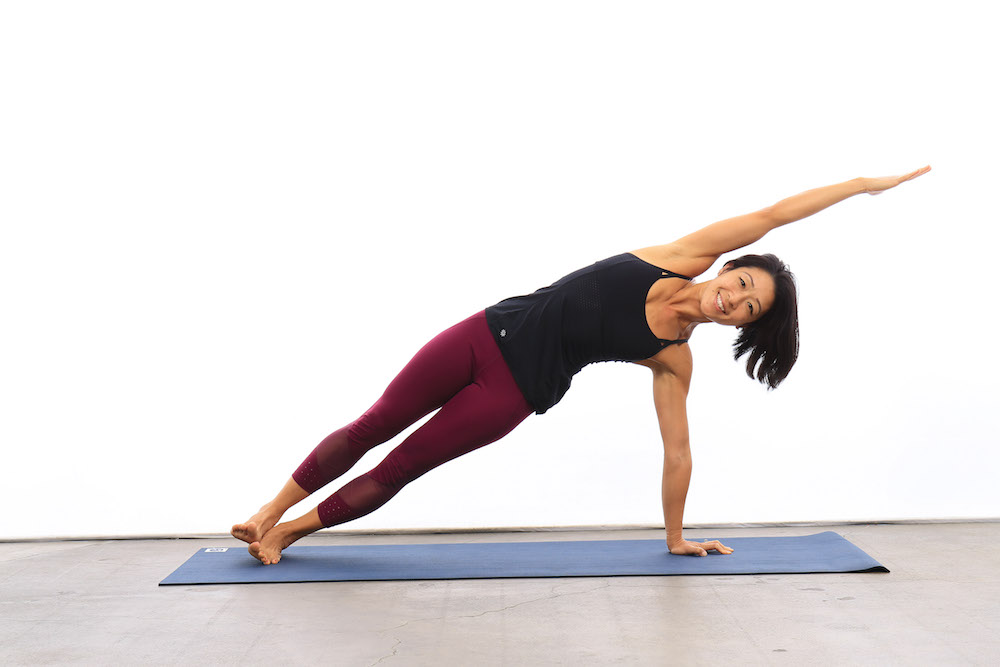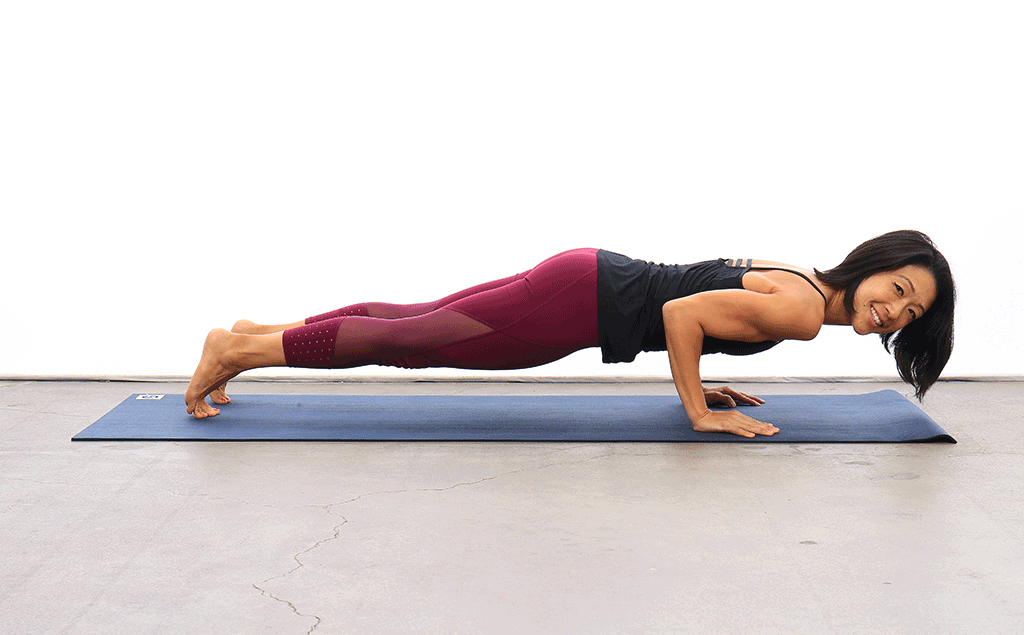If you’re a new yogi who’s just gotten into a regular practice, chances are that you started simple with many of your poses. Learning the fundamentals of a good flow and steady breath are key to any good yoga practice, but perhaps you’ve decided you’re ready to advance from the basics. And that’s where we (and your trusty yoga instructor!) come in. We met with Bay Club Marin yoga instructor, Grace Ling Yu where she showed us a few of the foundational poses and transitions you’ve probably been practicing, with some tips on how to take it to the next level.

Chattarunga: You may have begun this transitional movement by stepping (rather than hopping) back into plank, and then lowering down. To take Chattarunga to the next level, try hopping back to plank, landing quietly with your feet behind you. Don’t rush through this movement—the slower you move, the harder your muscles work to support your bodyweight. Keep your elbows in by your sides and slooooowly lower down before moving into upward facing dog.
Tip to remember: When jumping back into chattarunga, it’s easy to land like a brick on your mat. Try to engage your core and legs to land lightly on your mat. It’s also much better for your joints!

Warrior III: One of the most powerful and cardio-intensive poses in yoga, warrior III may provide plenty of challenge as is. But if you’re looking to amp it up, focus on not just the balancing act, but also on your alignment. Reach your arms out in front of you, flex your extended foot, and make sure your hips are aligned (both facing toward the mat). You can even take this into a different balancing or standing pose, by rotating open into a half moon, or bending your extended leg and lengthening into a backbend in dancer’s pose.
Tip to remember: Breathe. It’s tempting to hold your breath in challenging poses like this one, but focus on inhaling and exhaling to help your balance.

Side Plank: Perhaps you started side plank with a forearm or knee down on the mat. If you want to take side plank into the core-bracing, strength-building pose that it is, try rising up to balancing on your hand. Don’t let your hips dip down or backward—hold them up and just a bit forward. Looking for more? Try gripping the toe of your top foot and extending it up or in front of you. This intensifies the pose by igniting the core and challenging your balance.
Tip to remember: Don’t overextend in this pose. You don’t want to pull anything in your shoulders or hips. If it feels like your gritting your teeth to hold onto a more advanced version, let go and then try again next class!
If you’re looking for a yoga class to help you begin, or advance, our clubs offer a host of different classes for all levels. Our experienced instructors, like Grace, are always happy to help you find the most beneficial poses for your physical needs.





